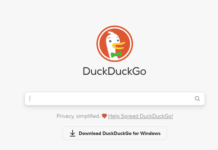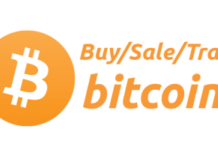Do you need the best anonymous OS? That’s what this entire list is about. It doesn’t matter if you simply wish to be more anonymous or browse the dark web. With these installed, no one’s tracking you!
The best part? Every single one of these is free and tested by millions of users over time. There’s no learning curve either! Most of these are just as easy to use as those privacy-invading OS that you normally do.
These also remove the additional hassle of downloading independent encrypted tools for different purposes. Yes, in most cases, these OS have pre-installed encrypted and safe apps for everything you may need.
Let’s get you a private operating system then?
How to Choose The Best Anonymous Operating System?
Well, I’ve been using some of these operating systems for about 10 years now! That obviously means I’ve gone through a lot of them.
So, here’s how I pick my anonymous OS and how you should do:
- Open-source: It’s always best to go with code you can verify. It’s not always available, or mandatory but when possible do prioritize open-source codes.
- Tor routing: Those OS that routes any and everything over the Tor network is definitely on top of my list. (Remember to still install and use an additional VPN).
- Live OS: Those systems that do not require an installation and can be run directly from a USB/disk are my favorites.
- Amnesic: It’s always better if the OS removes all your activity logs/traces of you using the OS automatically at shutdown. That’s what Amnesic OS do.
- In-built privacy tools: Most of these OS offer dozens of pre-installed tools that facilitate encrypted browsing, communication, file-sharing, metadata removal, and so much more.
- Isolation: I’ve prioritized those OS that compartmentalizes different tools/apps/networks. This is a lifesaver in the event that there is indeed a breach.
That’s about it. If the checklist satisfies even some of what you think is important, this list won’t disappoint you.
TAILS OS
![]() Website: https://tails.boum.org/
Website: https://tails.boum.org/
TAILS stands for “The Amnesic Incognito Live system”. Each word of that phrase defines TAILS as you’ll soon see.
TAILS is to OS what TOR is to browsers. For starters, it routes everything over TOR. This by default anonymizes your traffic, activities, and most importantly the IP address.
Did I mention it’s a LIVE OS? Meaning, you can run it off a USB stick, no system installation is required! Yes, as soon as the USB is plugged out, it’s gone!
Is someone trying to spy on you? It’s fruitless. All data and traces of you even using TAILS is permanently deleted each time you shut your system down! Meaning the files/websites you browsed, devices you connected to, and every bit of other data, gone, poof!
Do note that TAILS is Amnesic (from Amnesia), it forgets everything. However, it does offer optional “persistent storage” options. You can choose to store some files, bookmarks, emails services, etc. so that they aren’t wiped at reboot.
It obviously has a majority of the best privacy tools you’ll ever need. These include an anonymous e-mail client, anonymous messenger, ad-blockers, browser (TOR), and more.
TAILS is 100% free and open-source. That’s a massive trust booster, isn’t it? If that wasn’t enough, Edward Snowden, the guy who exposed NSA to the world recommends TAILS as well.
Whonix
![]() Website: https://www.whonix.org/
Website: https://www.whonix.org/
After TAILS, Whonix without a doubt is the second-best anonymous operating system you can get your hands on.
Alike TAILS, WHONIX too uses Tor to keep your online activities as anonymous as a ninja on a dark night. Everything is routed over TOR without requiring additional steps from you.
Oh, and it too is a live OS. Meaning, you can run it from a USB stick directly.
I do love WHONIX’s “separation” (not from its wife)! It uses virtualization to separate your different activities and components, ensuring that no leaks or compromises can get in the way of your privacy.
Stream Isolation is another component of its separation superpowers. With stream isolation, WHONIX separates your internet connections into different channels.
These features ensure that even if one component/channel is compromised, your system still stays safe.
WHONIX uses DNSCrypt to encrypt all DNS traffic, ensuring that your data stays safe and sound. On a normal OS, you’d need a separate VPN to achieve that, and even that fails at times.
WHONIX also is very selective of what comes in or goes out. Its firewall blocks all incoming and outgoing traffic by default, only allowing traffic that is explicitly approved by you.
Alike TAILS, it too has dozens of built-in tools that facilitate encrypted communications, mailing, browsing, and other everyday activities.
Finally, WHONIX is like an open book, and that’s a good thing! Its open-source code allows anyone to inspect, verify and audit the code ensuring there are no hidden backdoors.
Parrot Security
![]() Website: https://www.parrotsec.org/
Website: https://www.parrotsec.org/
This is one of the most popular OS for anonymity out there, for a good reason.
The OS markets itself as the OS for hackers, security specialists, developers, and so on. One of its primary USPs is that it comes pre-loaded with 600+ tools that you may find handy. It has encrypted, safe tools for communication, pentesting, browsing, and everything in between.
It’s simple enough to be used by the average user but advanced enough for the most skilled hackers. I personally love its forensic tools!
More importantly, it recently even launched a “web version”! You heard that right. A virtual distro can now be accessed and used without installing it via your web browser!
Its compatibility is another one of its core features. Parrot Security can probably run on it even if you got a computer from the World War.
It has built-in virtualization tools that let you make a virtual hacking lab without endangering your machine. It’s basically a sandboxed environment that lets you play around.
Anonymity is a critical component of Parrot Security OS, guaranteeing that your online behavior is shielded from prying eyes. It has this optional “anonymous mode”, when enabled, it routes everything via Tor.
Of course, there are no telemetries or tracking features that Windows so blatantly parades around on the pretext of offering “better features and experience”.
It’s free & open-source and even offers full disk encryption. Pretty secure!
Discreete OS
Website: https://www.privacy-cd.org/
The name says a lot about why it’s on this list. For starters, it’s a Live-only OS. Meaning you can not install it even if you wanted to. It needs to be run directly from the source (USB/Disk). Alike TAILS, on each reboot, all data and activity logs are permanently wiped off.
In fact, it’s even armed with anti-forensic features. Even the feds or other similar organizations can not “recover” your data or activities once you turn off the system.
Then, it’s not only open-source but also volunteer-run. Meaning there’s no “profit” angle to it. Of course, anyone who speaks code can verify all of its claims.
All data stored on Discreete OS is stored on an encrypted “Cryptobox”. It can only be accessed under the shield of Discreete, meaning even if your system is infected your data remains secure.
Similarly, it’s cut off even from the internet! You heard that right—complete isolation.
Finally, the UI has been so that it can offer strong protection even to the newest of computer users. Yes, it’s easy.
Qubes OS
Website: https://www.qubes-os.org/
Qubes is definitely a great addition to this list. Do bear in mind that its “Live” version isn’t supported anymore. You can still run it from USB sticks or external drives but you’ll need to “install” the OS on these drives first.
It uses something called virtualization. It’s basically the isolation/separation/compartmentalization for different tasks. This includes activities such as web browsing, social media document editing, banking etc.
It basically ensures that even if your browsing/document editing or some other aspect is compromised, the other aspects and the system still remain secure.
Disposable VMs are something else that fascinated me when I had first heard of them. When you’re about to do something that’s questionable or maybe just suspicious, these come in handy. E.g. when you open a mail attachment, visit a potentially dangerous site etc. Once the task is complete, the Disposable VM is automatically deleted, preventing any potential threats from lingering in the system.
It also includes TemplateVMs, which are preconfigured VMs that can be used to create new AppVMs. Hence, if you’re new to VMs, you can still make these VMs with pre-configured settings and configurations.
I love its “SecureBoot” feature. It verifies the integrity of the boot process and prevents any unauthorized changes to the system.
Oh, Edward Snowden is pro-Qubes as well.
Subgraph OS
Website: https://subgraph.com/
Of course, like all other good anonymous OS on the planet, Subgraph OS too is Tor-friendly. Nothing passes your system without being routed through the Tor network first.
Sandboxing isn’t missing, either. Yes, Subgraph OS too isolates different processes and applications, like separating your angry ex from your new lover. This ensures only specific applications are compromised and not everything else if that ever happens.
Also, everything on your disk is fully encrypted. A hacker may sure get in if you’re not careful but even then the data won’t make sense to them.
You even get to control which apps can or can not connect to the internet. This makes sure there are no background processes/malware secretly sending your data to third parties.
It even has multiple built-in anti-exploitation features. These monitor your system by default and notify you if your system is being exploited.
Fan of updates? I’m not. However, they’re important when it comes to security, aren’t they? Subgraph OS allows automated updates.
Subgraph is open-source but that’s not the most impressive part about it. Rather, all the software included with the OS is also open-source! Obviously, it has pre-installed software to facilitate encrypted and safe communication and everyday use. All of that’s open-source as well.
The UI is pretty user-friendly as well. Pretty much anyone, without almost any “tech skills” can get on it right away.
Linux Kodachi
Website: https://distrowatch.com/
Linux Kodachi has most, if not all the ingredients required to serve up the anonymity dish.
For starters, it’s a live OS. So yes, it totally can be run directly from USB sticks or CD/DVD drives.
Then, everything is routed over Tor AND a VPN.. This of course masks your location and overall browsing activities. This also offers automated DNS encryption by default.
Oh, it has dozens of pre-installed privacy tools as well. These include Tor, Exif Cleaner, OnionShare and so much more.
And yes, each time it’s turned off, all data that could be related to your use of the system is deleted.
While it doesn’t write data to the hard disk (for obvious reasons), it does allow creating optional persistent storage. This lets you decide what data isn’t gutted on system reebot.
Optional full disk encryption is available as well. I do love its “Nuke” feature! So, when you opt for full disk encryption you’ll need to enter a password each time you access the system.
The “nuke” is a failsafe. It’s a second password you can set. Suppose there’s a gun to your head and you must unlock your system, you enter the nuke password. All files, data, and everything else on your system is just gone, poof!
Ipredia OS
Website: https://archiveos.org/ipredia/
I’ll be honest, it’s not just my first choice for an anonymous OS. That’s primarily due to its UI and overall features. However, it certainly is one of the oldest OS and can keep you and your activities private.
The built-in anonymous networking technologies in iPrediaOS enable users to access the internet privately and automatically protect your online activities.
Its file-sharing features are pretty robust. You can share files with other users without having to rely on a central server! Decentralization rules eh? Along the same lines, it’s pre-installed with I2P router as well as a Bittorrent client.
It has software for everything including file sharing, e-mails, encrypted chat and much more making it simple for users to communicate and exchange files safely.
Oh and it wouldn’t be where it is today without being open-source. No secrets whatsoever.
Conclusion:
TAILS. I may be biased, but I’ve used it for the longest duration and am really impressed with the overall features and security that it offers.
Of course, QubesOS or Whonix is equally impressive as well. The problem is most of these are identical in terms of features, usability and security being offered.
So, I wouldn’t confuse you further. It’s my advice you start with TAILS, and then if you wish to play around, check the other anonymous operating systems on this list.



















